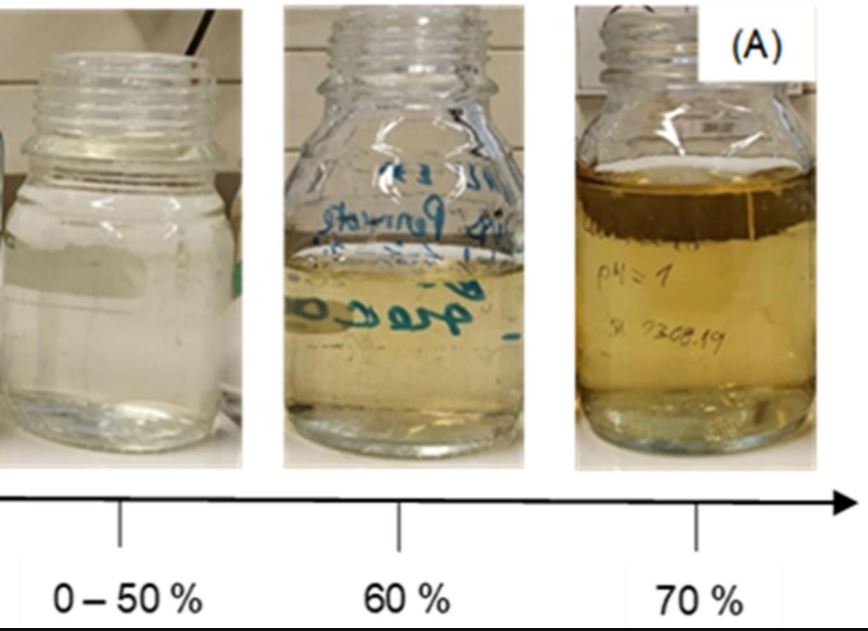
Abstract
The aim of this study is the utilization of membrane distillation (MD) in the treatment of hydrothermal liquefaction wastewater (HTL-WW) to recover ammonium in the condensate. Experiments were carried out using MD under air–gap configuration with HTL-WW pretreated via Ultrafiltration. The results showed membrane stability in long-term operations, up to 36 days and through a wide range of feed temperatures, from 30 °C to 60 °C (Coolant temperature was kept at 20 °C). Feed temperatures, 50 °C and 60 °C provided the best condensate quality, defined by high ammonium concentrations, up to 12 g/L (for 60 °C feed temperature), and low impurity (low contamination by TOC) based on the highest NH4+:TOC ratio of 13 (for 50 °C feed temperature). Furthermore, since flux experienced an exponential growth with the increase of feed temperature, 60 °C was chosen as the optimal temperature to expand the study on membrane/condensate recovery, which was performed until 80%. From observational and several analytical methods, wetting was unavoidable above 60% recovery and the cause was credited to organic fouling, mainly via surfactants’ adsorption on the membrane surface. This decreased the membrane hydrophobicity, and eventually led to the progressive wetting of the membrane at 80% recovery.
Authors: Ali Sayegh, Nikhil Shylaja Prakash, Harald Horn, Florencia Saravia
Full paper here: https://www.sciencedirect.com/science/article/pii/S1383586621020839?via%3Dihub
